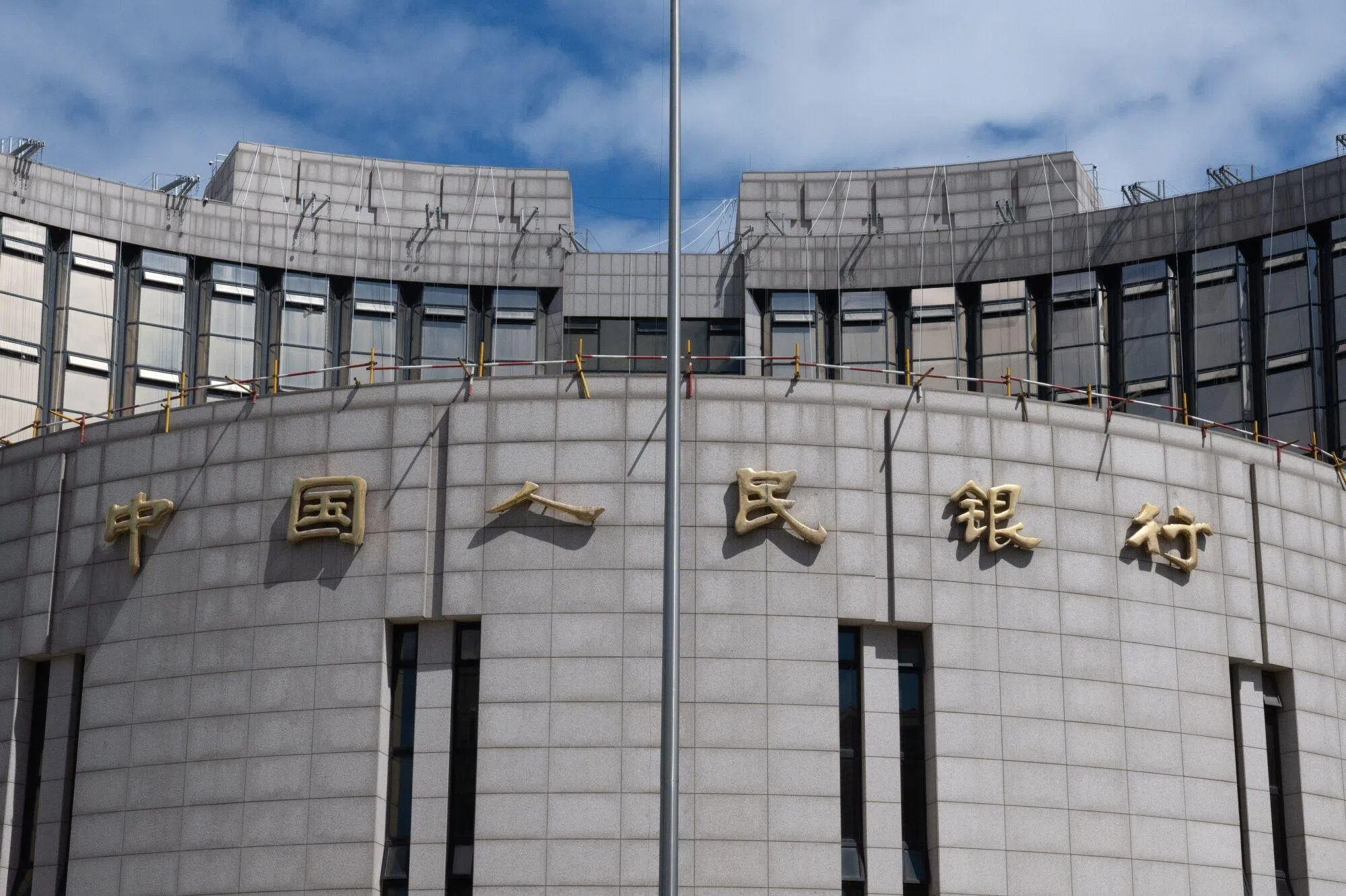CHINA’S central bank will deliver the biggest interest-rate cuts in a decade next year as policymakers intensify efforts to shore up growth and arrest deflation, in the view of a number of Wall Street banks.
Goldman Sachs and Morgan Stanley are among those projecting cuts of 40 basis points to the People’s Bank of China’s (PBOC) main policy rate in 2025. That would be the largest reduction in a calendar year since 2015, taking the seven-day reverse repo rate down to 1.1 per cent. The median forecast in Bloomberg’s most recent survey was for 30 basis points of cuts.
While the scale is far short of what’s typical at central banks in most other major economies, the PBOC has reason to be wary. Lower rates would compress banks’ already record-low net interest margins – leaving them with less cushion for losses amid a continuing property slump. In any case, few analysts think that monetary policy alone has the power to stoke the economy at a time of subdued demand for credit.
Still, central bank chief Pan Gongsheng has signalled he’s ready to do his bit in the wider effort to revive an economy that faces mounting growth challenges. China is experiencing its longest streak of deflation this century – which keeps the real cost of borrowing high, even as the PBOC trims its rates. The return of Donald Trump to the White House threatens a second trade war that could make things worse.
“Fiscal stimulus will need to do the heavy lifting in boosting demand next year,” although lower rates are also needed, said Hui Shan, chief China economist at Goldman Sachs. “To counteract strong growth headwinds from both weak domestic demand and potential increases in US tariffs, we think significant macro easing, including monetary policy easing, is warranted.”
Economists have called for the government to step up borrowing and spending and take more action to stabilise a prolonged real estate slump.
BT in your inbox
Start and end each day with the latest news stories and analyses delivered straight to your inbox.
The rate-cut predictions suggest China’s low-rate environment may be here to stay, a trend that’s been in the spotlight in bond markets lately. Yields on 10-year government debt plunged under 2 per cent this week for the first time on record, while China’s 30-year yield fell below that of Japan.
Tariff hit
US tariffs could deepen the country’s deflation woes if exporters struggle to find overseas buyers for their products, and have to sell more of them on the sluggish domestic market instead.
The broadest measure of Chinese prices – the so-called GDP deflator – has been below zero since early 2023, which is keeping inflation-adjusted borrowing costs high. The predicted cuts by the PBOC could go some way towards easing the burden on consumers, companies and local governments by making it easier to finance their existing debts.
One concern that’s held back the PBOC from more aggressive cuts is the potential for capital flight if the gap between Chinese interest rates and those elsewhere grows wider – though that risk would diminish if the Federal Reserve keeps cutting US rates. The Fed kicked off monetary easing in September and is expected to lower rates again later this month when policymakers will issue updated projections for 2025 and beyond.
“China is facing a greater risk of deflation than before and the PBOC needs to respond to it,” said Larry Hu, head of China economics at Macquarie Group, who also sees 40 basis points of rate reductions next year. “The Fed being in a rate-cut cycle provides greater policy room for it.”
PBOC cuts, along with other policies to support domestic demand, may be able to offset a projected 0.5 percentage point drag on China’s growth from higher US tariffs next year, he said.
The Chinese central bank has shown a willingness to take more decisive steps to counter the economic slowdown. In September, Pan delivered a 20-basis point reduction to the seven-day rate – breaking from the pattern that’s prevailed since 2022 of lowering it by only 10 basis points each time.
Costly credit
Some analysts think the PBOC will move even faster next year. Serena Zhou, an economist with Mizuho Securities Asia, forecasts 60 basis points of cuts in the policy rate as well as the benchmark lending rate, known as the loan prime rate.
The cost of credit is “unreasonably high”, Zhou said in a report last week, pointing out that loan rates have been higher than the nominal GDP growth rate for five consecutive quarters, squeezing the profitability of Chinese businesses. BLOOMBERG



